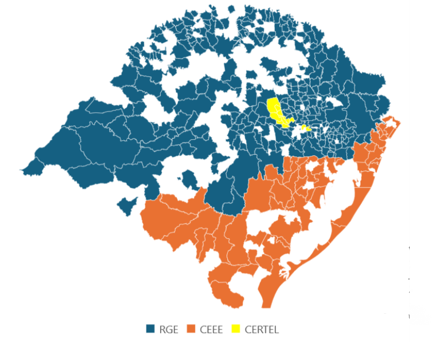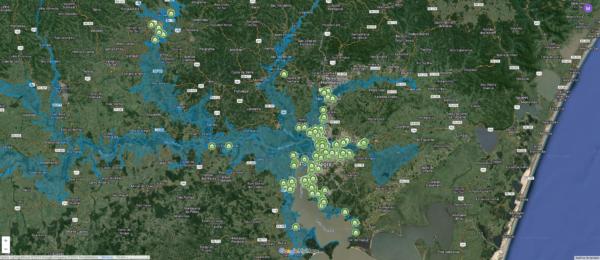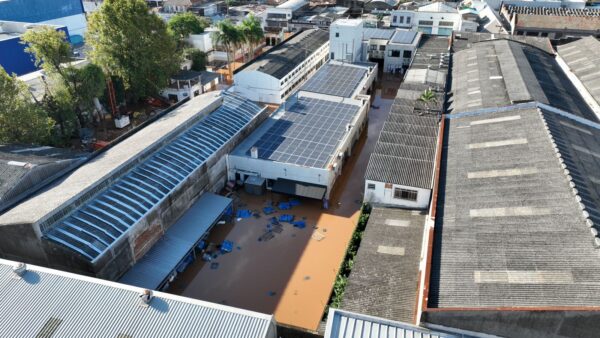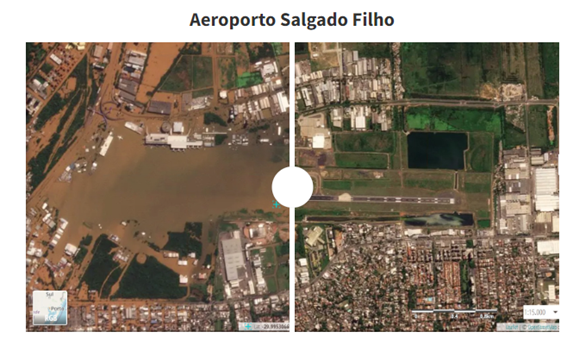From pv magazine Brazil

Climate change

Mara Schwengber, coordinator of the Brazilian Association of Photovoltaic Solar Energy (Absolar) in Rio Grande do Sul and the CEO of Solled Energia, also organized a fundraiser to help flood victims.
“As the G5 is spread across the country, in the first few days we managed to raise financial resources to purchase items such as water, food, biscuits, cleaning materials and basic hygiene,” said Schwengber. “As a result, we managed to get more people to participate and we are already organizing the donation of 100 double mattresses to local companies, which somehow need to resume their activities, in addition to a large batch of blankets that are coming from São Paulo and will be destined to the victims.”
Schwengber said that Absolar is still unable to assess the damages to PV systems in the state because the victims are a priority and because the water needs to recede to access these locations. “Lives are the priorities right now and we need to do everything we can to minimize suffering,” she added.
PV impact
Yes Energia' project coordinator and database administrator, Leandro Pandolfo, said that he began developing a flood impact map based on preliminary mapping data from the Hydraulic Research Institute (IPH).
“With the flooded areas mapped, we applied the layer containing the exact locations of the systems installed by Yes Energia. This way we identify those affected by location and the technology installed. With customers filtered by manufacturer and technology, we began the process of checking alerts via our own system called Yes Assist and the manufacturer's dedicated monitoring platform,” said Pandolfo.


“We saw the damage happen inside the house,” says the co-founder of Yes Energia, Tiago Fernandes. “Those affected by the flood are our friends, colleagues and customers. Given these facts, our commercial and administrative teams began to work remotely, while the technical teams were mainly focused on emergencies. We put together an action plan, which consists of three key steps: assessment and information collection; contacting commercial partners; and recovery of facilities and infrastructure.”

However, there is a big difference in terms of the security of these two models, he added.
“The modules will be energized as long as the sun is shining, even if the system is not producing energy,” said Spohr. “In string systems, the circuits coming from the roof will have high electrical voltage, creating risks in these situations. In SolarEdge systems, there are optimizers connected to the modules, which have a feature called Rapid Shutdown, a quick shutdown mechanism that reduces voltage levels to almost zero, reducing the potential risk to the flooded area.”
Even with inverters equipped with the technology, Spohr said that most customers do not have insurance for solar energy systems.
“We are in continuous contact with the manufacturers so that they can mobilize to evaluate the damaged equipment, but if necessary, we will collect this entire equipment base and send it to a company specialized in electronics to try to recover the inverters,” he said. “However, if this is done, we know that we will lose future guarantees.”

“From the photos we received this week, it is possible to see that these first homes that had their systems affected are simple homes, where families lost everything they had, personal documents, furniture, appliances, clothes, and sometimes the house itself was taken away by the floods,” said Filho.

This content is protected by copyright and may not be reused. If you want to cooperate with us and would like to reuse some of our content, please contact: editors@pv-magazine.com.




By submitting this form you agree to pv magazine using your data for the purposes of publishing your comment.
Your personal data will only be disclosed or otherwise transmitted to third parties for the purposes of spam filtering or if this is necessary for technical maintenance of the website. Any other transfer to third parties will not take place unless this is justified on the basis of applicable data protection regulations or if pv magazine is legally obliged to do so.
You may revoke this consent at any time with effect for the future, in which case your personal data will be deleted immediately. Otherwise, your data will be deleted if pv magazine has processed your request or the purpose of data storage is fulfilled.
Further information on data privacy can be found in our Data Protection Policy.